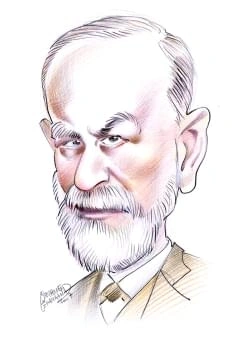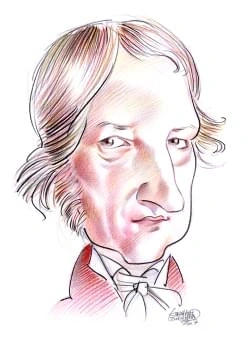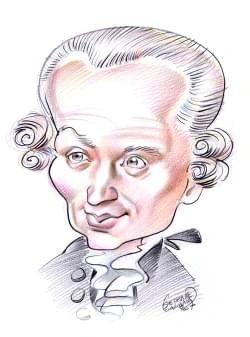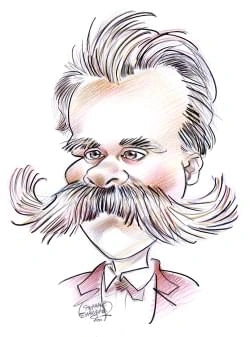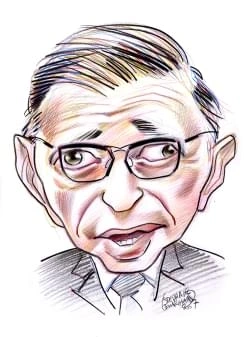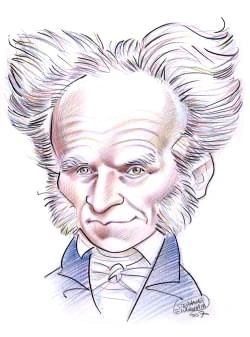787 résultats pour "percent"
-
Senegal - country.
Although most of the population works in agriculture, Senegal has a growing industrial sector, one of the largest in West Africa. Nevertheless, two cash crops remain atthe foundation of the economy—peanuts and cotton. Important technical and economic assistance has been provided by France and other countries of the EuropeanUnion and the International Bank for Reconstruction and Development (World Bank). In 2006 the gross domestic product (GDP) was $9.2 billion, or $760.90 a person. A Agriculture...
-
Ethnic Groups in Canada - Canadian History.
Ontario and the Atlantic provinces (Nova Scotia, New Brunswick, Newfoundland and Labrador, and Prince Edward Island). Most of the Irish live in rural areas of NovaScotia, New Brunswick, Prince Edward Island, Ontario, and Québec. The Welsh are by far the smallest group among the British Canadians, and they have also settled inthe Atlantic provinces and Ontario. B Culture The language spoken by British Canadians is mostly English, but some Welsh speak their own Celtic language and some Scots, Gae...
-
Philadelphia (city, Pennsylvania) - geography.
national trend of migration from eastern cities to the warmer climate of the Sun Belt. Whereas in 1950 Philadelphia contained more than 2 million people and ranked as the third largest city in America, the city's population plunged to 1,517,550 by 2000.In 2006, the city's population was estimated at 1,448,394. While the city proper was decreasing in population, the metropolitan area centered on Philadelphia grew. In 2006 the region had 6.2 million inhabitants. Philadelphiaranked as the nation’s...
-
Albania - country.
Joining the international community in its concern over the degradation of the environment, Albania is party to international agreements concerning biodiversity, climatechange, and wetlands. III THE PEOPLE OF ALBANIA In 2008 Albania’s population estimate was 3,619,778, resulting in an average density of 132 persons per sq km (342 per sq mi). More and more people have left ruralareas for urban ones, particularly in the northern districts, such that in 2005 some 45 percent of the population live...
-
Globalization.
higher living standard for their people. The World Bank made loans to developing countries for dams and other electrical-generating plants, harbor facilities, and otherlarge projects. These projects were intended to lower costs for private businesses and to attract investors. Beginning in 1968 the World Bank focused on low-cost loansfor health, education, and other basic needs of the world’s poor. B International Monetary Fund The IMF makes loans so that countries can maintain the value of thei...
-
Latvia - country.
The population of Latvia is about 2,245,423 (2008 estimate), yielding an average population density of 35 persons per sq km (91 per sq mi). Latvia is highly urbanized.Some 66 percent of the population lives in urban areas, with nearly one-third of the total population residing in the capital, Rīga. Other important cities includeDaugavpils, an industrial center in the southeast, on the Daugava River; Liep āja, an important port on the Baltic Sea; Jelgava, an industrial center near Rîga; J ūrmala,...
-
Lebanon (country) - country.
during the civil war. Within the country, thousands of Shia Muslim refugees fled fighting in southern Lebanon in the 1990s and moved into shantytowns in Beirut’ssouthern suburbs. Lebanon’s major cities were greatly affected by the civil war. Beirut has gradually regained most of its prewar population and remains the country’s largest city. Tripoli,the northern port, is the second largest city. Jūniyah, north of Beirut, was developed as a wartime port and subsequently had a population boom. Za ḩl...
-
Great Depression in the United States - U.
prices would continue to rise and they could soon sell their stocks at a profit. The widespread belief that anyone could get rich led many less affluent Americans into the market as well. Investors bought millions of shares of stock “on margin,” arisky practice similar to buying products on credit. They paid only a small part of the price and borrowed the rest, gambling that they could sell the stock at a highenough price to repay the loan and make a profit. For a time this was true: In 1928 the...
-
-
Tanzania - country.
The population of Tanzania (2008 estimate) is 40,213,162, giving the country an overall population density of 45 persons per sq km (118 per sq mi). Yet the populationdistribution is irregular, with high densities found near fertile soils around Kilimanjaro and the shores of Lake Malawi, and comparatively low density throughout much ofthe interior of the country. In the late 1960s and 1970s the Tanzanian government resettled most of the rural population in collective farming villages as part of i...
-
Ethiopia - country.
constitute about 6 percent of the population. The Somali, who live in the east and southeast, notably in the Ogadēn region, are about equal in number to the Shangalla.The Denakil inhabit the semidesert plains east of the highlands. The nonindigenous population includes Yemenis, Indians, Armenians, and Greeks. B Political Divisions Ethiopia is divided into nine regions composed of specific ethnic groups. The regions, which have a significant degree of autonomy, are Tigray; Afar; Amhara; Oromia;S...
-
Manitoba - Geography.
E Plant Life Forests cover 66 percent of Manitoba. The main forest area is divided into the boreal forest and the mixed-wood forest. The boreal, or northern, forest containsconiferous (cone-bearing) trees, especially white and black spruce, balsam fir, and jack pine. South of the boreal forest is the mixed-wood forest, which contains conifers as well as such deciduous trees as white birch, aspen, poplar, and Manitoba maple. Prairie land is found in the southwest, where the natural vegetation i...
-
Manitoba - Canadian History.
E Plant Life Forests cover 66 percent of Manitoba. The main forest area is divided into the boreal forest and the mixed-wood forest. The boreal, or northern, forest containsconiferous (cone-bearing) trees, especially white and black spruce, balsam fir, and jack pine. South of the boreal forest is the mixed-wood forest, which contains conifers as well as such deciduous trees as white birch, aspen, poplar, and Manitoba maple. Prairie land is found in the southwest, where the natural vegetation i...
-
Blacks in Latin America.
Throughout Latin America and the Caribbean the slave population declined at the astonishing rate of 2 to 4 percent a year; thus, by the time slavery was abolished, theoverall slave population in many places was far less than the total number of slaves imported. The British colony of Jamaica, for example, imported more than 600,000slaves during the 18th century; yet, in 1838, the slave population numbered little more than 300,000. The French colony of Saint-Domingue (present-day Haiti)imported mo...
-
Chile - country.
D Plant and Animal Life The indigenous plant life of Chile varies according to climatic zone. Plant life in the northern region includes brambles and cactus and has little variety. Here, theAtacama provides one of the best examples on Earth of an absolute desert. The more humid Central Valley supports several species of cacti, espino (a thorny shrub),grasses, and the Chilean pine, which bears edible nuts. Dense rain forests are located south of Valdivia with laurel, magnolia, false beech, and v...
-
Libya - country.
junipers and mastic trees are found in the higher elevations. Only a few large mammals are found in Libya. Wildlife includes desert rodents, hyenas, gazelles, and wildcats. Eagles, hawks, and vultures are common. E Environmental Issues Libya has undertaken a number of major irrigation projects intended to ease the country’s water shortage. The most ambitious is the so-called Great Man-Made River(GMMR), a massive 25-year irrigation scheme begun in 1984. The GMMR is a vast water pipeline system d...
-
Bill Clinton.
When Arkansas governor David Pryor ran for the U.S. Senate in 1978, Clinton ran for governor. He promised to improve the state’s schools and highways and toimprove economic conditions so that more jobs would be created. At that time, the average income of people in Arkansas ranked 49th among the 50 states. Clinton woneasily, receiving 60 percent of the vote against four opponents in the Democratic primary election and 63 percent against the Republican candidate, Lynn Lowe, in thegeneral election...
-
-
Bill Clinton - USA History.
When Arkansas governor David Pryor ran for the U.S. Senate in 1978, Clinton ran for governor. He promised to improve the state’s schools and highways and toimprove economic conditions so that more jobs would be created. At that time, the average income of people in Arkansas ranked 49th among the 50 states. Clinton woneasily, receiving 60 percent of the vote against four opponents in the Democratic primary election and 63 percent against the Republican candidate, Lynn Lowe, in thegeneral election...
-
Turkmenistan - country.
A Ethnic Groups With Turkmens constituting 77 percent of the population, Turkmenistan is the most ethnically homogeneous of the Central Asian republics. Uzbeks make up the largestminority group, with about 9 percent of the population. Other ethnic groups include Russians, Kazakhs, Tatars, Ukrainians, Azeris (ethnic Azerbaijanis), Armenians, andBaluch. In 1993 a bilateral treaty between Turkmenistan and Russia granted dual citizenship to Russians in the republic. At the 1995 census Russians cons...
-
Atom - chemistry.
Atoms have several properties that help distinguish one type of atom from another and determine how atoms change under certain conditions. A Atomic Number Each element has a unique number of protons in its atoms. This number is called the atomic number (abbreviated Z). Because atoms are normally electrically neutral,the atomic number also specifies how many electrons an atom will have. The number of electrons, in turn, determines many of the chemical and physical properties ofthe atom. The ligh...
-
Whale - biology.
III BEHAVIOR OF WHALES Studies of whales in captivity have taught scientists much about the complex social behavior of whales. Since the late 1980s, advances in the use of satellite trackingsystems have also broadened opportunities for scientists to observe how whales behave in the wild. A Swimming and Diving Whales swim by making powerful up-and-down movements of the tail flukes, which provide thrust. The power comes from body muscles that flex the lower spine upand down in a wavelike motion...
-
Foreign Trade.
tax policies. Direct government support of various domestic industries is also viewed as a nontariff barrier to trade, because such support puts the aided industries at anunfair advantage among trading nations. V 20TH-CENTURY TRENDS In the first half of the 20th century, equal tariffs for similar goods was not the policy of all nations. Countries levied differential tariffs (charging lower tariffs to favorednations) and established other restrictive trading practices as weapons to fight unfrien...
-
Fiji Islands - country.
the early 1990s. Fishing is done mainly at a subsistence level, but commercial fishing is increasing. The country also receives income from the sale of licenses to foreignvessels to fish in Fiji’s exclusive economic zone. Industry, including mining, manufacturing, and construction, employs 34 percent of Fiji’s wage earners and, in 2006, contributed 26 percent of GDP. The governmentinstituted tax-free incentives in 1988 that created a flourishing garment industry. Ready-made garments are now the...
-
Guyana - country.
European patterns of living. People of mixed African and European ancestry form a distinct group in Guyana, maintaining closer social ties to the European communitythan to the African Guyanese community. Asians from the Indian subcontinent began to arrive in the 19th century, following the abolition of slavery in Guyana, to work as indentured and contract laborers. Theycontinued to arrive until 1917, when Britain outlawed indentured servitude. Thousands of Indians chose to remain in Guyana after...
-
Slovakia - country.
The country is divided informally into the three regions of Western Slovakia, Central Slovakia, and Eastern Slovakia, corresponding to administrative divisions that wereabolished in 1989. Most of Slovakia’s 600,000 Hungarians live in the southern parts of Western and Central Slovakia, which served as the cultural center of Hungary forseveral centuries after Hungary proper was invaded by the Ottomans in the 16th century. The Ruthenian and Ukrainian minorities are concentrated in the northernregio...
-
-
Nebraska - geography.
by natural resource districts to limit the rate of pumping for irrigation. C Climate Nebraska has a typical continental climate with wide seasonal variations in temperature. C1 Temperature Winter temperatures below -20°C (0° F) and summer temperatures in the upper 30°s C (lower 100°s F) are common. The average January temperature varies from about -7° C (about 20° F) in the northeast to about -2° C (about 29° F) in the southwest. The average for July, thehottest month, ranges from about 26° C...
-
Nebraska - USA History.
by natural resource districts to limit the rate of pumping for irrigation. C Climate Nebraska has a typical continental climate with wide seasonal variations in temperature. C1 Temperature Winter temperatures below -20°C (0° F) and summer temperatures in the upper 30°s C (lower 100°s F) are common. The average January temperature varies from about -7° C (about 20° F) in the northeast to about -2° C (about 29° F) in the southwest. The average for July, thehottest month, ranges from about 26° C...
-
Health Care System in Canada.
With a few exceptions, provincial health plans cover all medically necessary services, so that patients need not pay directly for anything except so-called incidental costs.These incidental costs include items such as a patient’s private hospital room, unless it is specified by a physician, and transportation to the hospital. Provincial healthplans also do not cover some nonessential procedures, such as laser surgery for the eye, cosmetic surgery, procedures to reverse sterilization, and, in mos...
-
Antarctica - geography.
The geographic South Pole lies near the center of the continent in East Antarctica. This point is where all map lines of longitude converge at the southern end ofEarth’s axis of rotation. Distinct from the geographic south pole is the south magnetic pole, where the lines of force of Earth’s magnetic field emerge vertically,arching upward over the planet to enter Earth again at the north magnetic pole. The south-seeking end of a compass needle points to the south magnetic pole. Thesouth magnetic...
-
The Gambia - country.
The population of The Gambia (2008 estimate) is 1,735,464, making it one of the least populous countries of Africa. Still, the country has a fairly high overall populationdensity of 174 persons per sq km (449 per sq mi), and the population is increasing at a rate of 2.7 percent a year. Banjul, formerly called Bathurst, is the capital andonly seaport. The largest city is Serrekunda, a transportation hub and commercial center. B Religion and Language The great majority of the people of The Gambia...
-
United Arab Emirates - country.
III PEOPLE Most people living in the UAE (known as Emiris) are Arabs, a large majority of whom are city and town dwellers. A small number are nomadic (having no permanent home). The population has grown dramatically since the mid-1960s, largely due to the influx of oil workers to the country. Four-fifths of the UAE’s inhabitants areforeign workers and their families. The UAE also has a very youthful population, due to the large numbers of young foreign workers, a cultural preference for larg...
-
Health Insurance.
needs services. Essentially, individuals make regular payments to the plan rather than having to pay especially large sums at any one time in the event of sudden illnessor injury. In this way, the group as a whole funds expensive treatments for those few who need them. Many people believe that in addition to providing financial stability, health insurance can promote good health. Supporters of this idea claim that by lowering thepersonal cost of services, insurance induces individuals to seek he...
-
Switzerland - country.
formation over higher elevations. The wind reverses direction about sundown and moves down the valley as a cool downdraft. The foehn, which occurs during the wintermonths, is a dry and relatively warm airflow that is drawn northward over the Alps. The foehn can quickly melt snow and ice, increasing the risk of mudslides andavalanches. D Natural Resources Waterpower is the chief natural resource of Switzerland. The principal source of water is runoff from the considerable annual precipitation th...
-
-
Tokyo - geography.
The port of Tokyo has expanded tremendously in recent years and is now the second largest in Japan (after Yokohama) in value of trade. In 1993 it accounted forapproximately 14 percent of all trade by Japan’s ports. Reasons for the port’s growth include the deepening of sea lanes in Tokyo Bay, large reclamation projects tocreate room for new facilities and container terminals, and improvements to storage and distribution facilities. The largest categories of exports from the port of Tokyoare mach...
-
George Bush.
1986 it was folded into Harken Energy Corporation, another Texas petroleum company. Bush served as a consultant and a member of Harken’s board of directors. In 1987 Bush relocated his family to Washington, D.C., to assist his father in his bid to become president. He worked as a campaign adviser at his father’s nationalcampaign headquarters, serving as a liaison to the media and to conservative and Christian leaders. He was a trusted confidant of his father and mother, whosometimes dispatched Bu...
-
George Bush - USA History.
1986 it was folded into Harken Energy Corporation, another Texas petroleum company. Bush served as a consultant and a member of Harken’s board of directors. In 1987 Bush relocated his family to Washington, D.C., to assist his father in his bid to become president. He worked as a campaign adviser at his father’s nationalcampaign headquarters, serving as a liaison to the media and to conservative and Christian leaders. He was a trusted confidant of his father and mother, whosometimes dispatched Bu...
-
Czech Republic - country.
enforcement of environmental regulations. Environmental considerations have also led some government officials to promote nuclear energy as a key source of powerfor the country’s future. The Czech Republic produces most of its energy by burning domestic coal. Much of the coal burned is low quality with a high ash and sulfur content—a key componentof acid rain—producing high levels of air pollution. Forests in the Czech Republic are among the most seriously affected by acid rain in all of Europe....
-
World Energy Supply.
In the 1990s, oil production by non-OPEC countries remained strong and production by OPEC countries rebounded. The result at the end of the 20th century was aworld oil surplus and prices (when adjusted for inflation) that were lower than in 1972. Experts are uncertain about future oil supplies and prices. Low prices have spurred greater oil consumption, and experts question how long world petroleum reservescan keep pace with increased demand. Many of the world’s leading petroleum geologists beli...
-
Honduras - country.
A Principal Cities The capital and largest city of Honduras is Tegucigalpa (2006 estimate, 1,324,000), located in the south-central highlands region. The country’s second largest city isSan Pedro Sula (549,498). The principal city and commercial center in the north, it lies in the heart of the vast banana plantations on the Caribbean Sea. La Ceiba(127,590) and Puerto Cortés (90,161) are among the leading Caribbean ports. B Language and Religion Spanish is the official language and is spoken by...
-
Prince Edward Island - Geography.
hectares (109 acres) each. In 2006 there were 1,700 farms, of which the average size was 148 hectares (366 acres). In 2005 the total farm cash receipts were C$510million. The most important agricultural products in terms of value include potatoes, milk and cream, cattle and calves, hogs, tobacco, vegetables, eggs, hens andchickens, and furs. For the most part the island’s agriculture is diversified, rather than specialized, because of the lack of a large urban industrial population within easy r...
-
Prince Edward Island - Canadian History.
hectares (109 acres) each. In 2006 there were 1,700 farms, of which the average size was 148 hectares (366 acres). In 2005 the total farm cash receipts were C$510million. The most important agricultural products in terms of value include potatoes, milk and cream, cattle and calves, hogs, tobacco, vegetables, eggs, hens andchickens, and furs. For the most part the island’s agriculture is diversified, rather than specialized, because of the lack of a large urban industrial population within easy r...
-
-
Egypt - country.
Egypt has a wide variety of mineral deposits, some of which, such as gold and red granite, have been exploited since ancient times. The chief mineral resource ofcontemporary value is petroleum, found mainly in the Red Sea coastal region, at Al ‘Alamayn (El ‘Alamein) on the Mediterranean, and on the Sinai Peninsula. Otherminerals include phosphates, manganese, iron ore, and uranium. Natural gas is also extracted. D Plants and Animals The vegetation of Egypt is confined largely to the Nile Delta,...
-
Saudi Arabia - country.
C Natural Resources Some of the world’s largest oil and natural gas fields lie beneath Saudi Arabia and its offshore waters, representing the country’s most economically important naturalresource. In 2007 Saudi Arabia’s oil reserves were estimated at 264 billion barrels. Before the discovery and exploitation of these reserves in the mid-20th century,Saudi Arabia was one of the poorest countries in the world. Its relatively small population subsisted in a harsh environment with little agricultur...
-
Denmark - country.
forests, which cover just 11.6 percent of the country, include conifers (mainly fir, spruce, larch, and pine), beech, oak, birch, and ash. Several varieties of ferns andmosses common to the northern European mainland are also found. Wild animals are scarce. Natural animal life is limited to deer and small animals such as foxes,squirrels, hares, wild ducks, pheasants, and partridges. Numerous species of freshwater fish live in Denmark’s streams and lakes. F Environmental Issues Considered highly...
-
Dominican Republic - country.
Manatees and sea turtles also live in Dominican waters. Common birds include blue herons, glossy ibis, flamingos, and brown pelicans. E Environmental Issues Urban dwellers of the Dominican Republic enjoy good access to safe water, but rural communities do not. While current water use is low relative to available resources,water shortages do occur. Although deforestation was once a serious problem in the Dominican Republic, by the beginning of the 21st century, the annual rate of deforestation h...
-
Atlantic Slave Trade.
members of the planters’ society. Through most of the years of the Atlantic trade, prices for Africans remained favorable in relation to the price of the crops theyproduced. They were, thus, the best economic solution for plantation owners seeking inexpensive labor. The Atlantic slave trade began as a trickle in the 1440s and grew slowly through the 17th century. By 1700, 25,000 slaves, on average, were crossing the Atlantic everyyear. After 1700 the trade grew much more rapidly to a peak in the...
-
Uzbekistan - country.
E Environmental Issues The evaporation of the Aral Sea is one of the worst ecological disasters in the world. The Aral has shrunk so much that it now holds only about one-fifth the volume ofwater it held in 1960. The shrinkage is due to irrigation withdrawals from the Amu Darya and Syr Darya, a practice that began on a massive scale in the early 1960s aspart of the Soviet Union’s ill-conceived drive to increase cotton yields in Central Asia. Growing cotton in the naturally arid and saline soil...
-
Afghanistan - country.
D Climate Most of Afghanistan has a subarctic mountain climate with dry and cold winters, except for the lowlands, which have arid and semiarid climates. In the mountains and afew of the valleys bordering Pakistan, a fringe effect of the Indian monsoon, coming usually from the southeast, brings moist maritime tropical air in summer.Afghanistan has clearly defined seasons: Summers are hot and winters can be bitterly cold. Summer temperatures as high as 49°C (120°F) have been recorded in thenorth...
-
Cyprus - country.
40,000 cubic meters (1.4 million cubic feet) of salt water into fresh water per day, opened at Dhekelia in 1997, and a second larger plant opened at Larnaca in 2001. III PEOPLE OF CYPRUS The combined population of the Greek and Turkish sectors (2008 estimate) is 792,604. The overall population density is 86 persons per sq km (222 per sq mi). About69 percent of the island’s inhabitants live in urban areas. Greek-speaking Cypriots make up approximately 85 percent of the population. About 12 perc...
-
-
Schizophrenia.
alcohol than other people. The use of alcohol and drugs often worsens the symptoms of schizophrenia, resulting in relapses and hospitalizations. IV CAUSES Schizophrenia appears to result not from a single cause, but from a variety of factors. Most scientists believe that schizophrenia is a biological disease caused by geneticfactors, an imbalance of chemicals in the brain, structural brain abnormalities, or abnormalities in the prenatal environment. In addition, stressful life events maycontri...
-
Belize - country.
Education is compulsory for children between the ages of 5 and 14. Attendance at primary schools was nearly universal in 2002–2003, but only 78 percent of children ofsecondary school age were enrolled in school. Higher education is available at colleges in Belize City and Corozal. The literacy rate of 93 percent is one of the highest inLatin America. C Government Belize is governed under a constitution that became effective at independence in 1981. Belize recognizes the British monarch as its o...
}})
